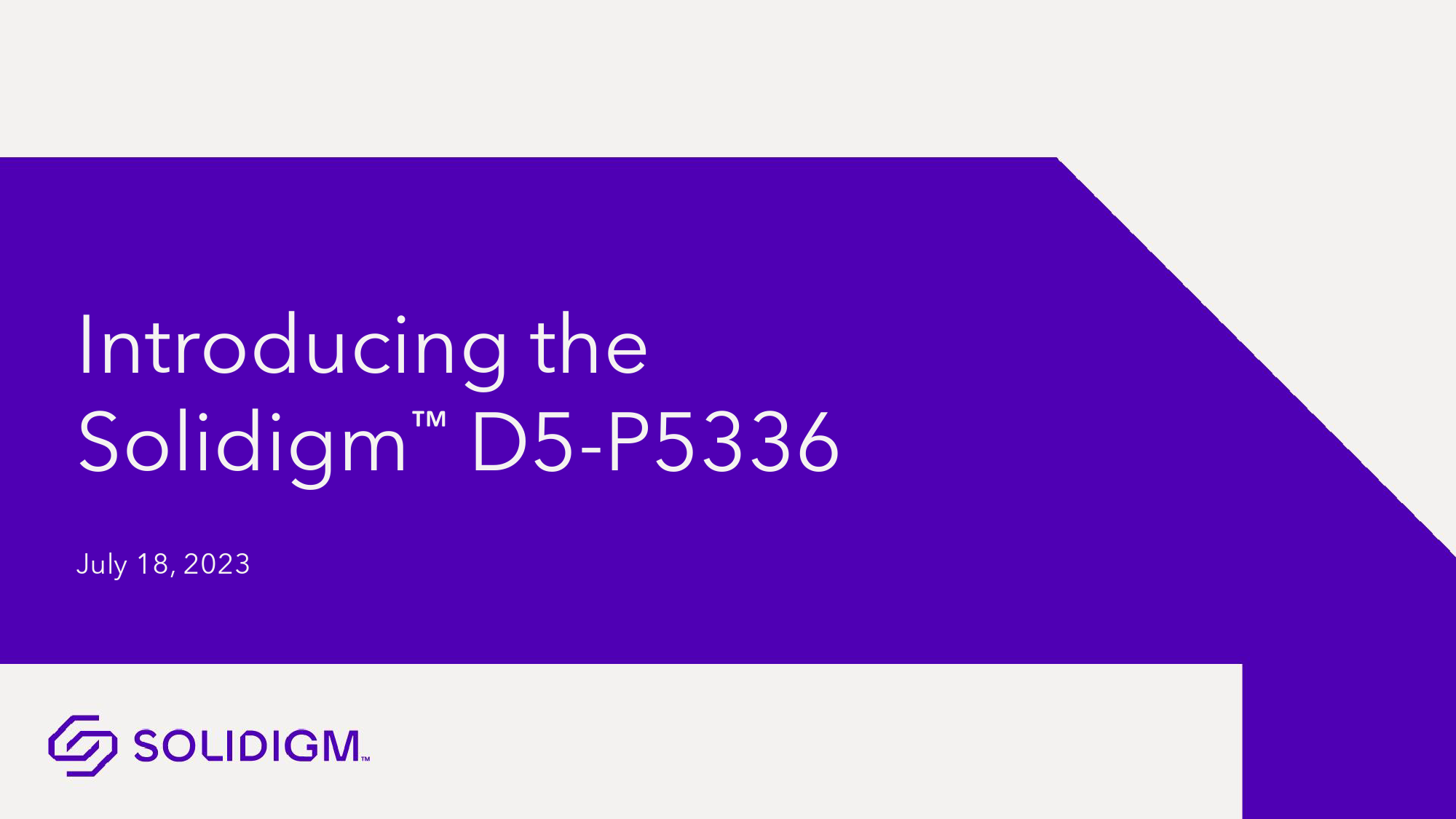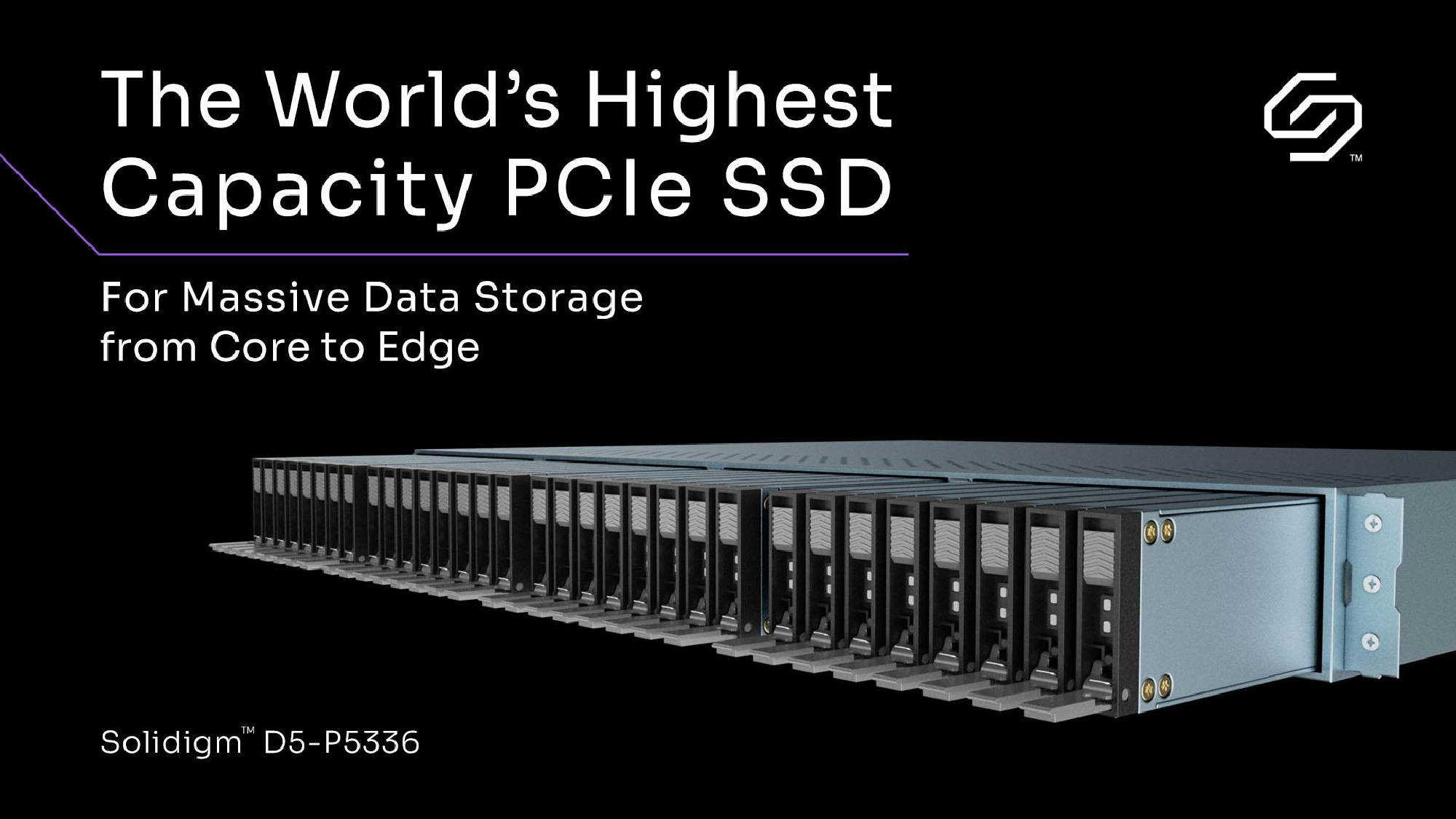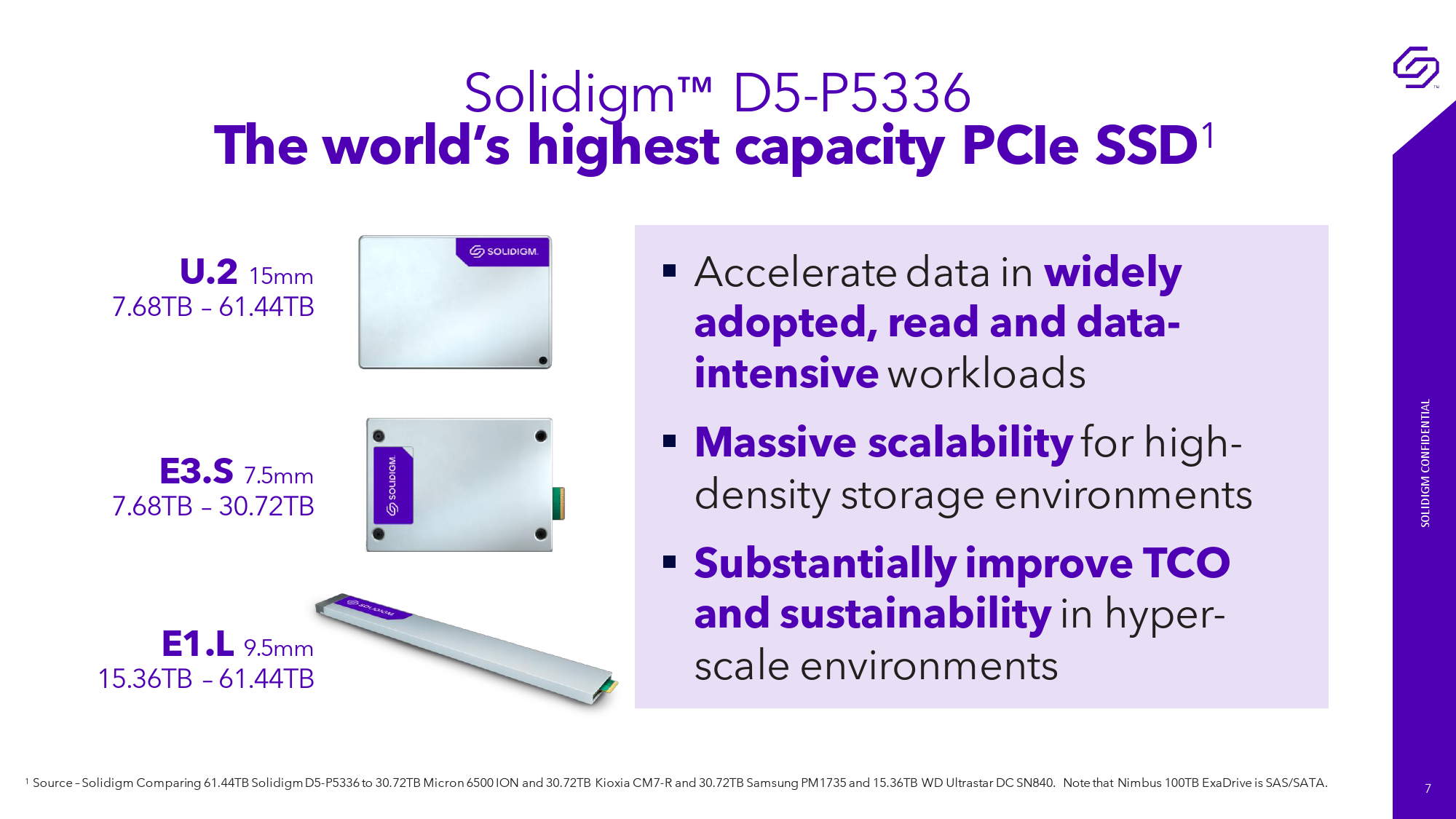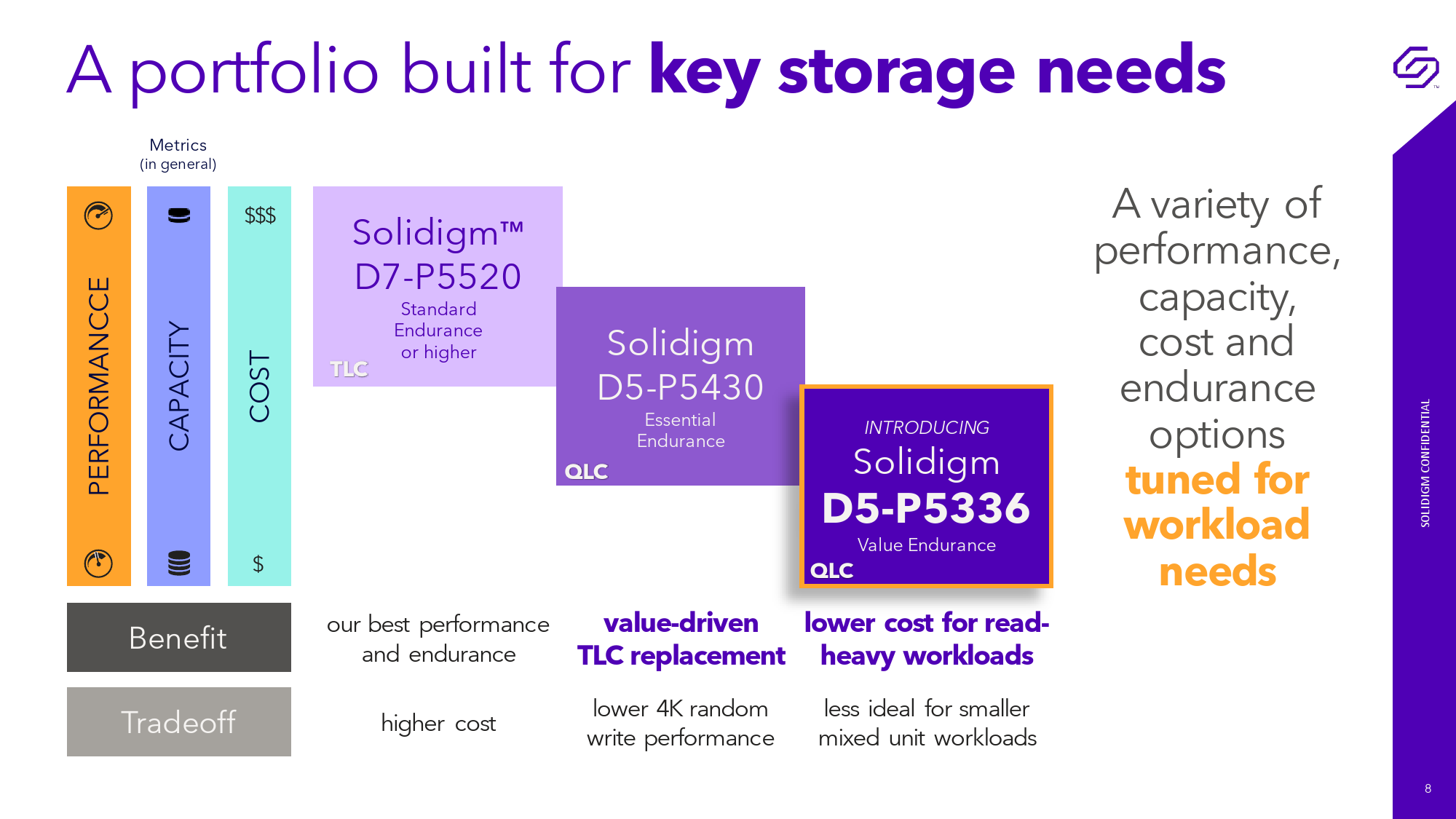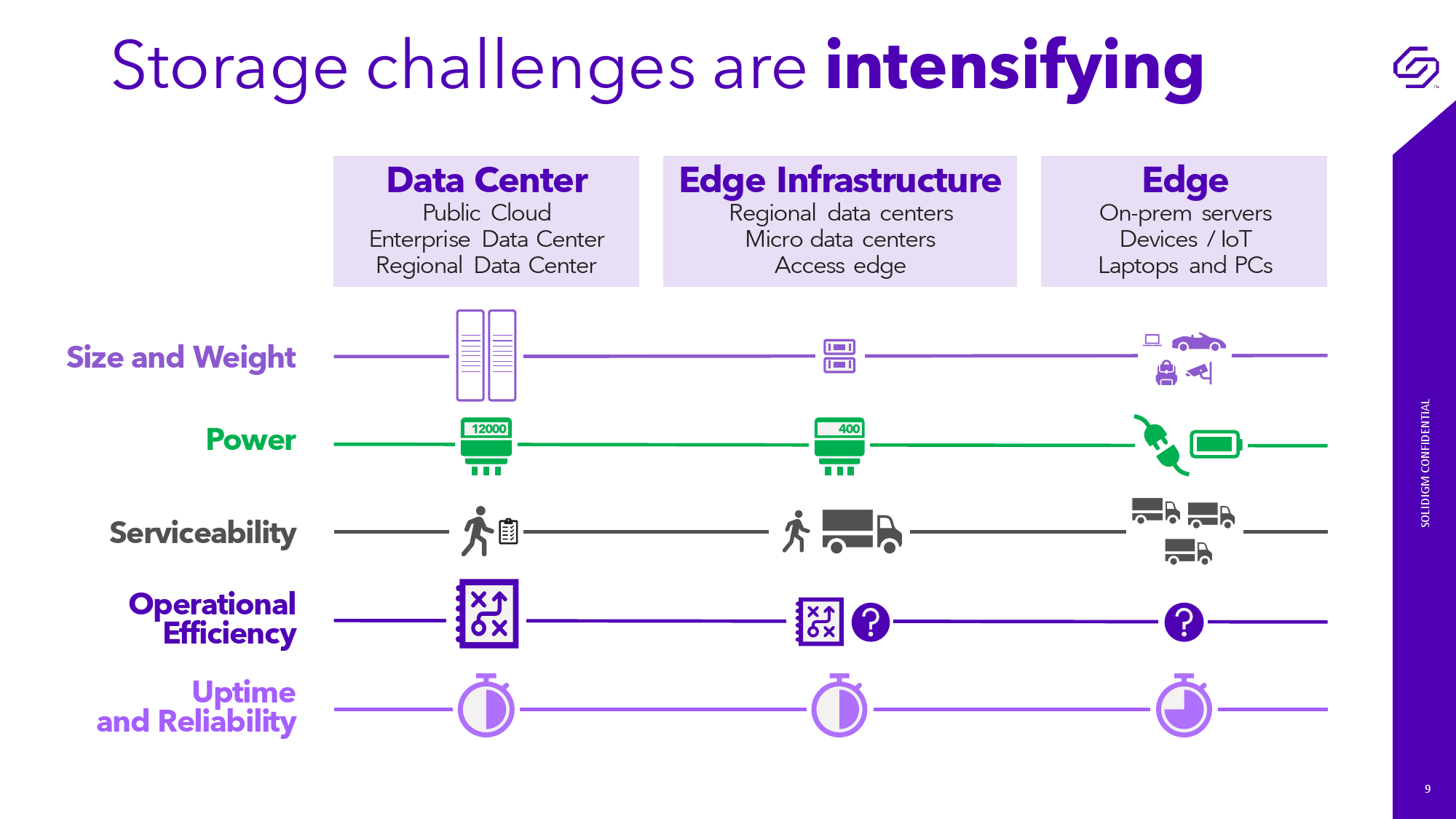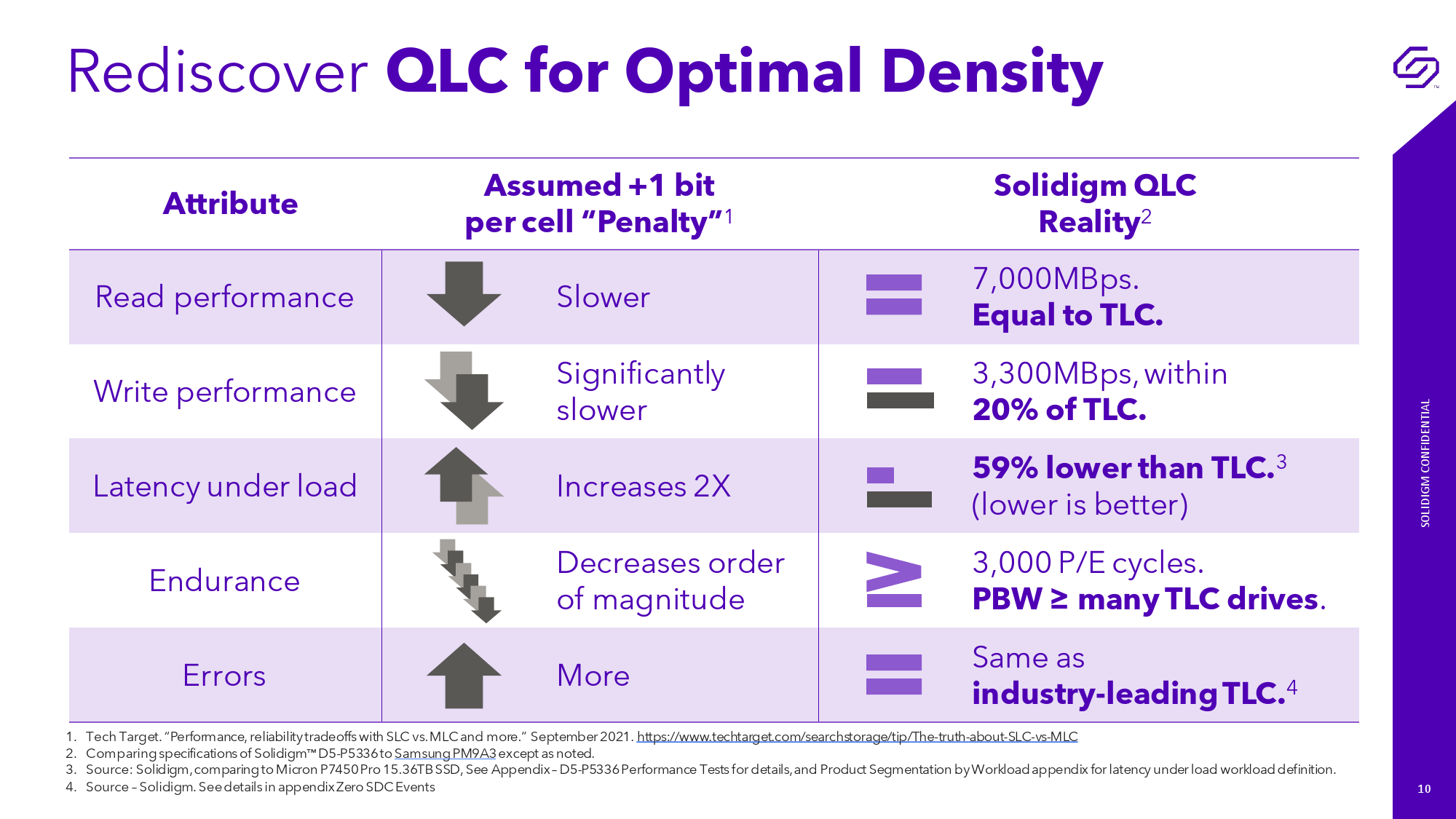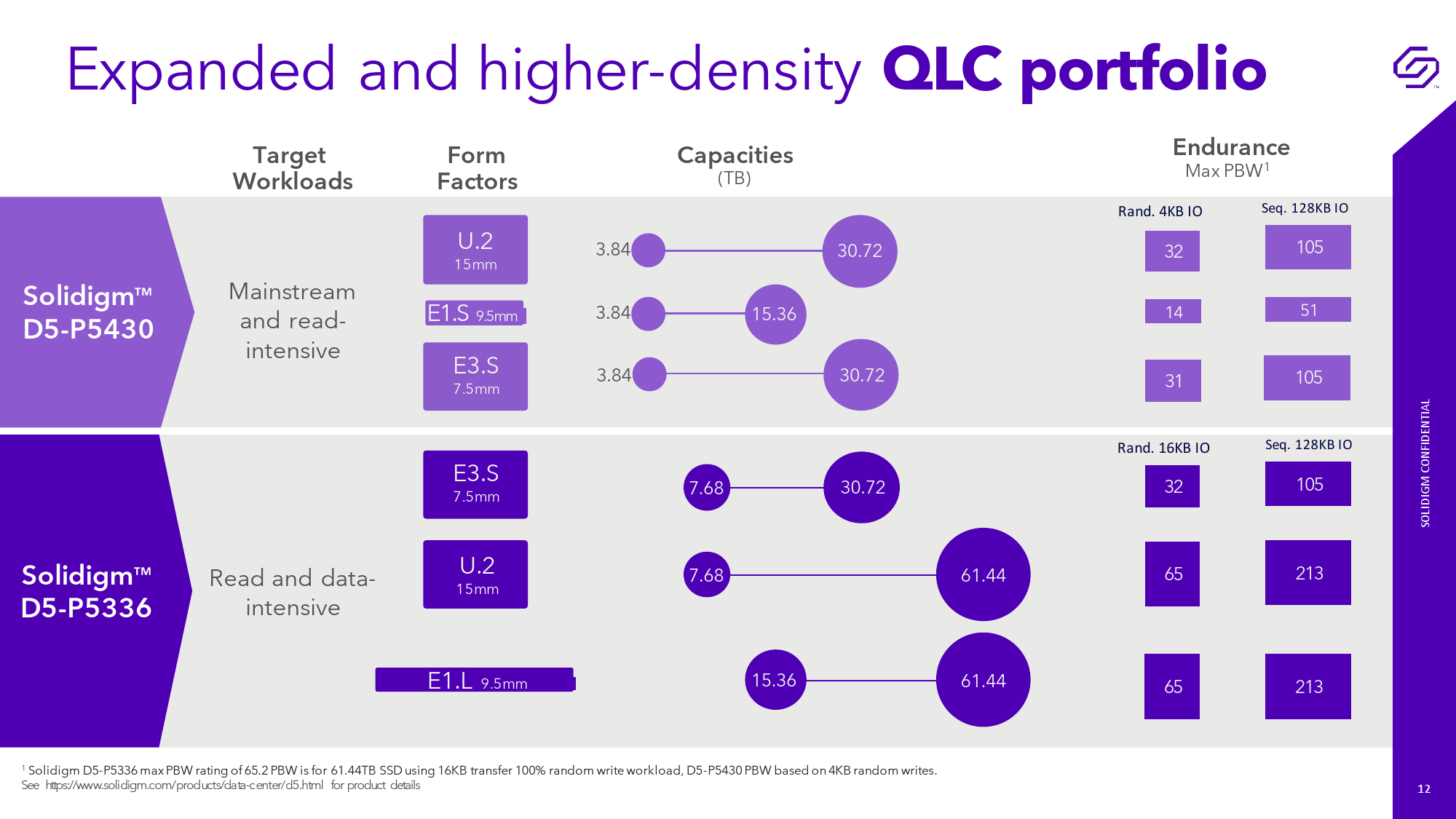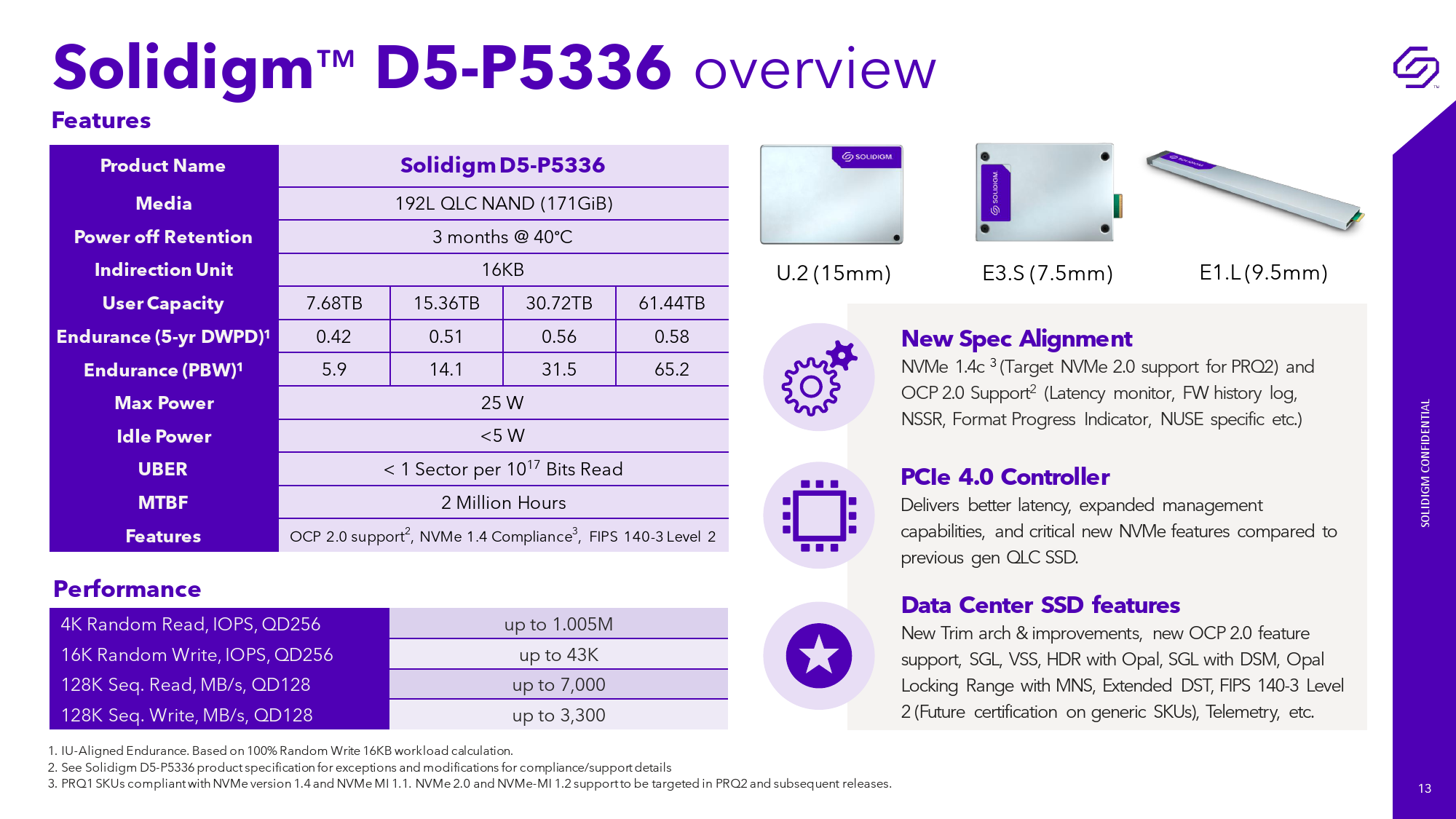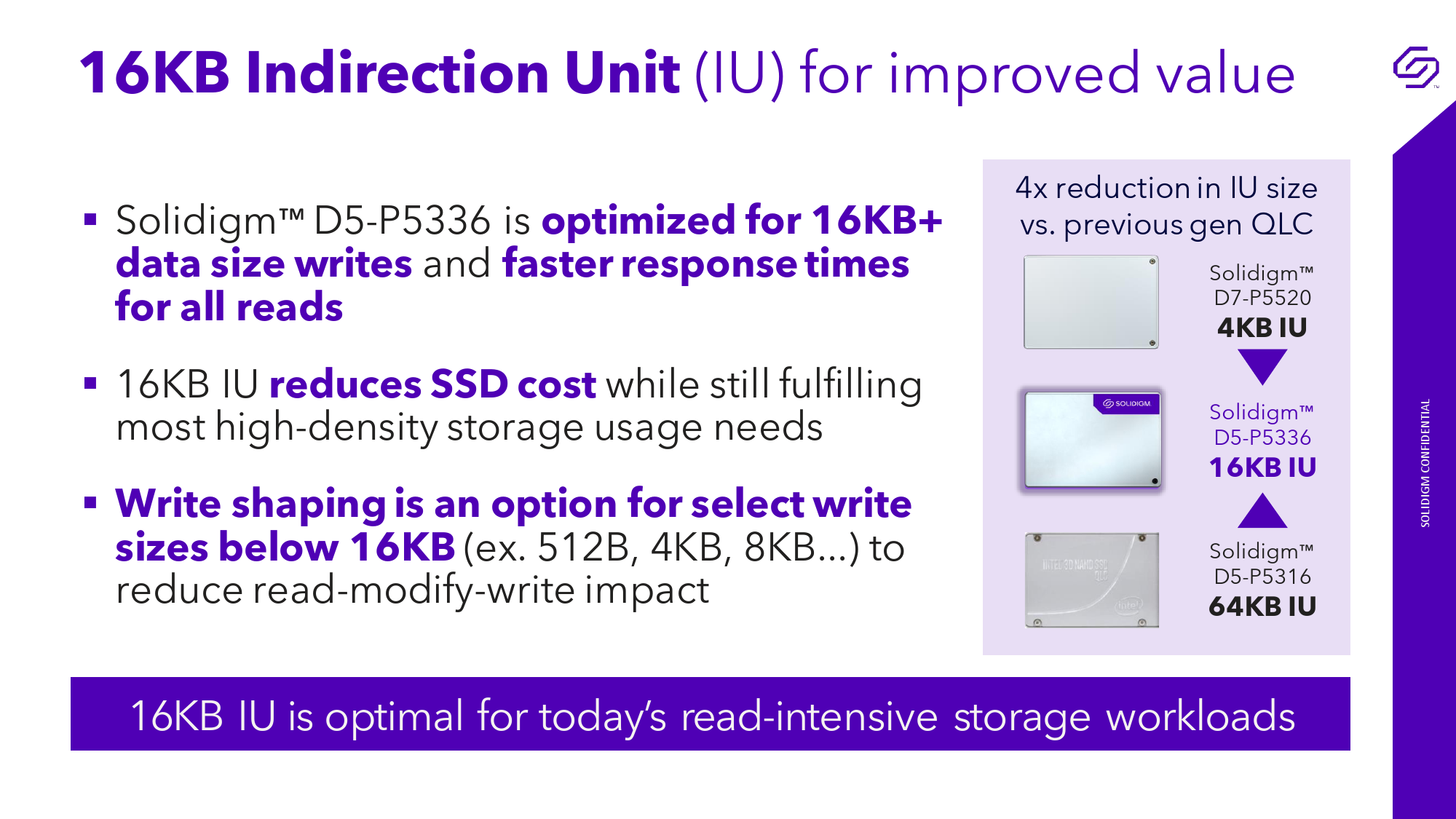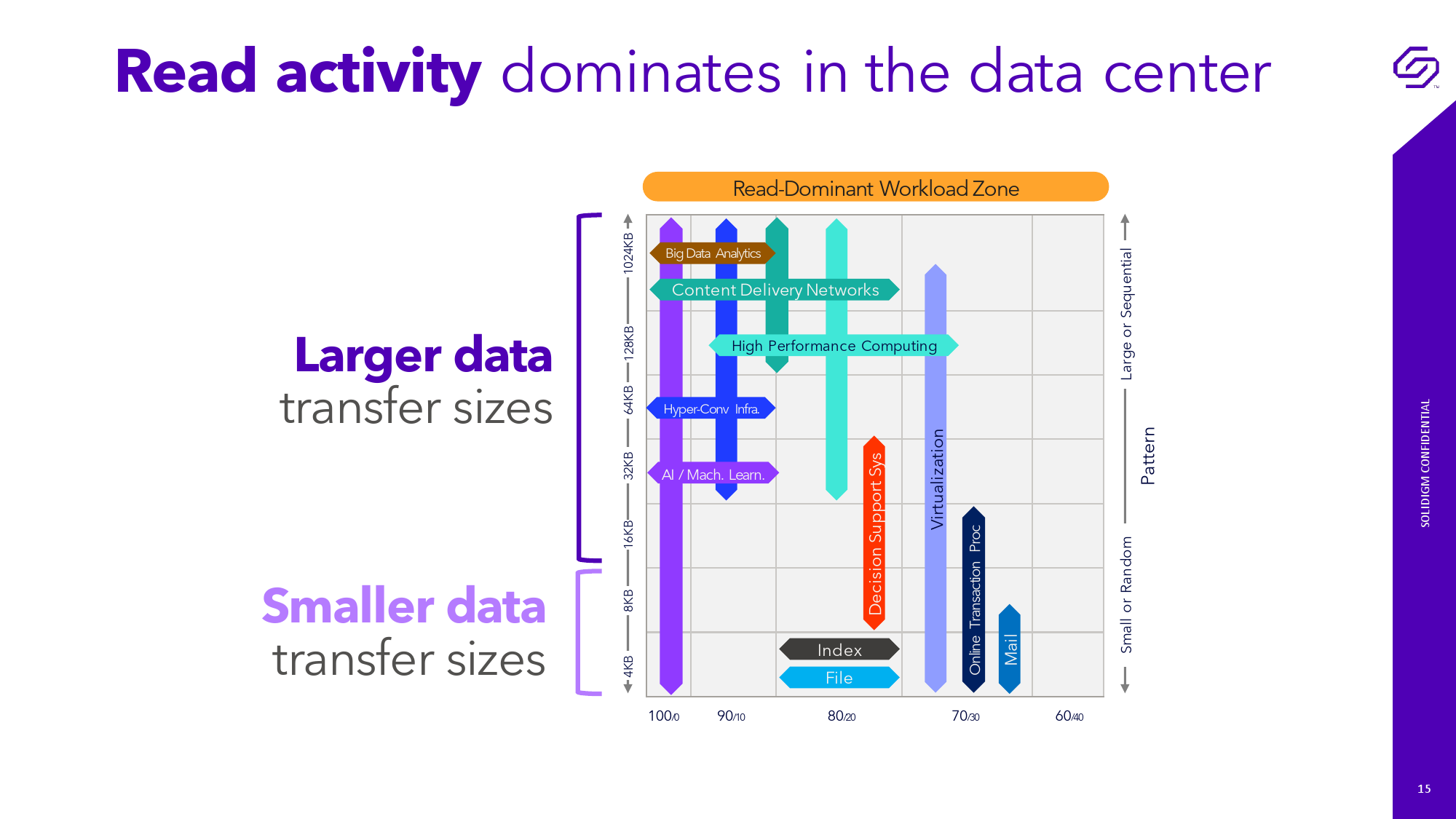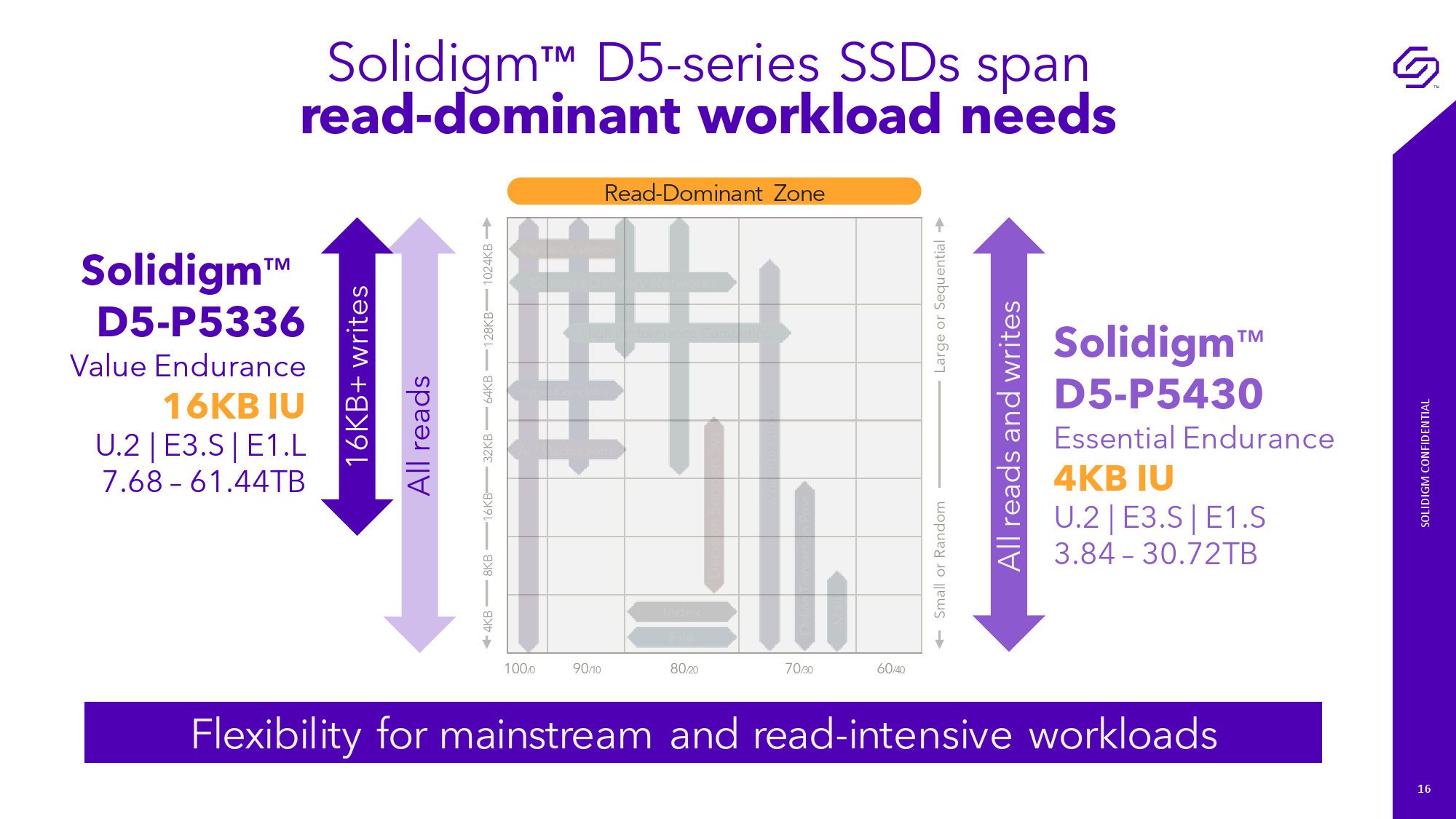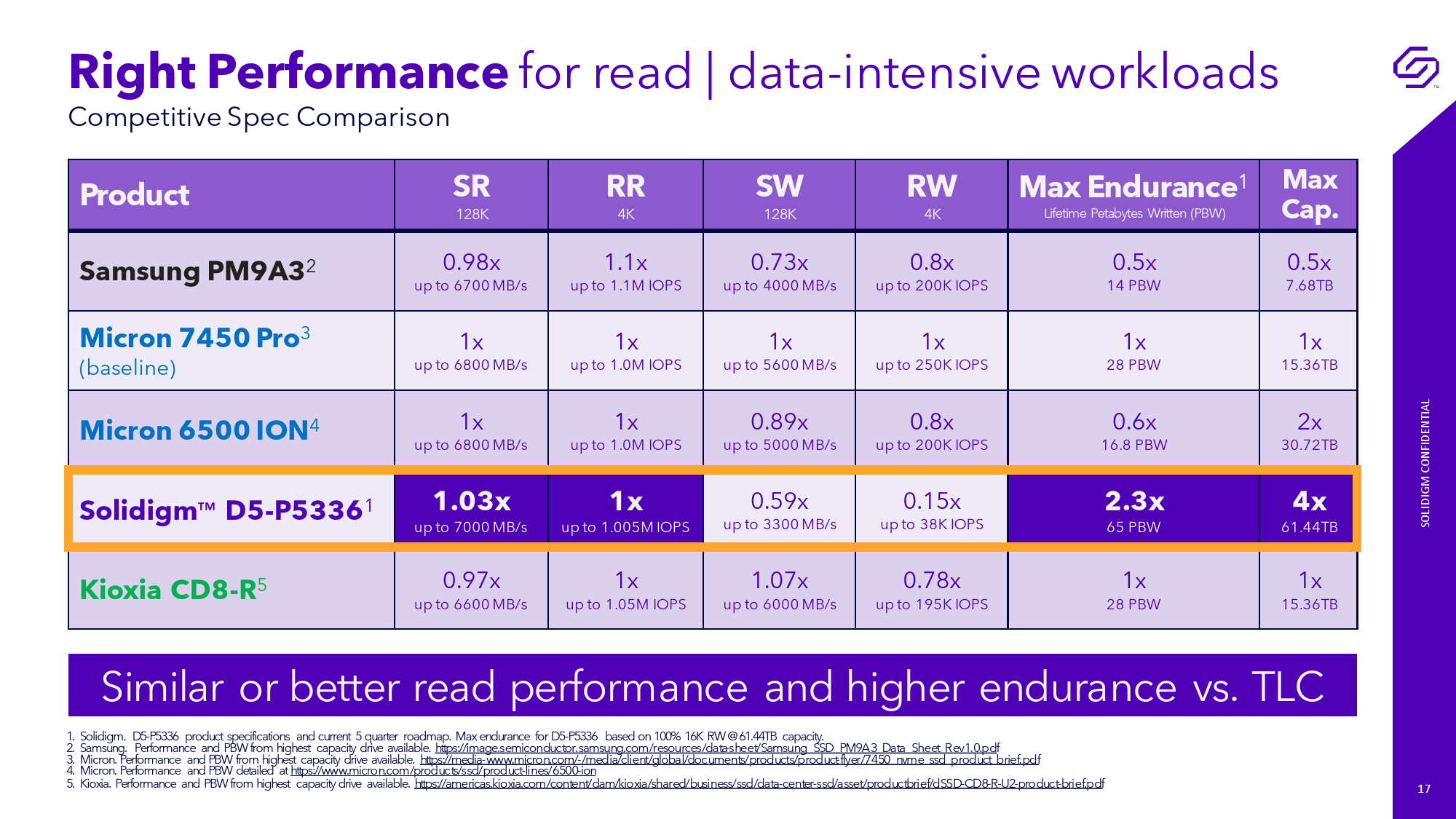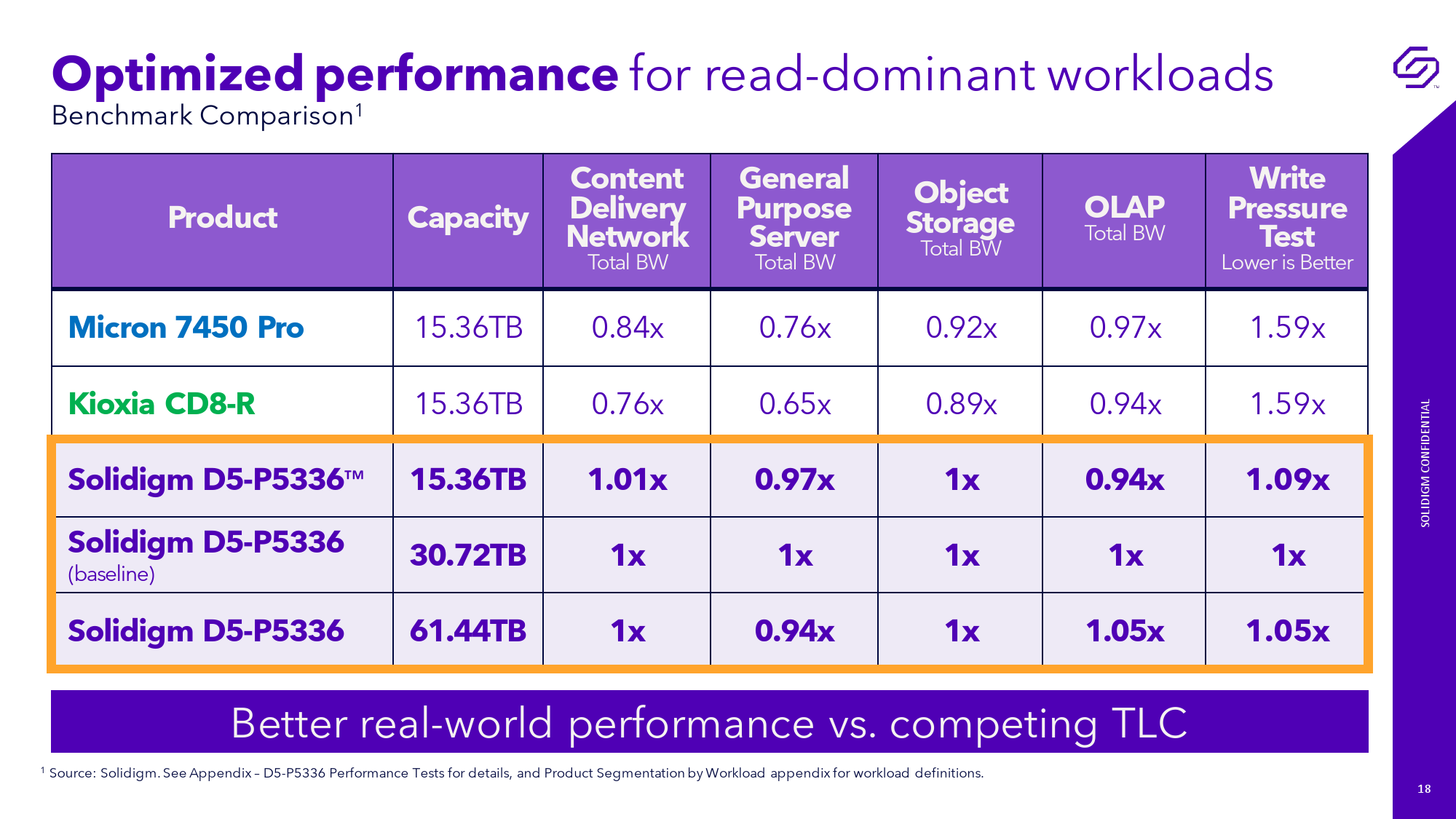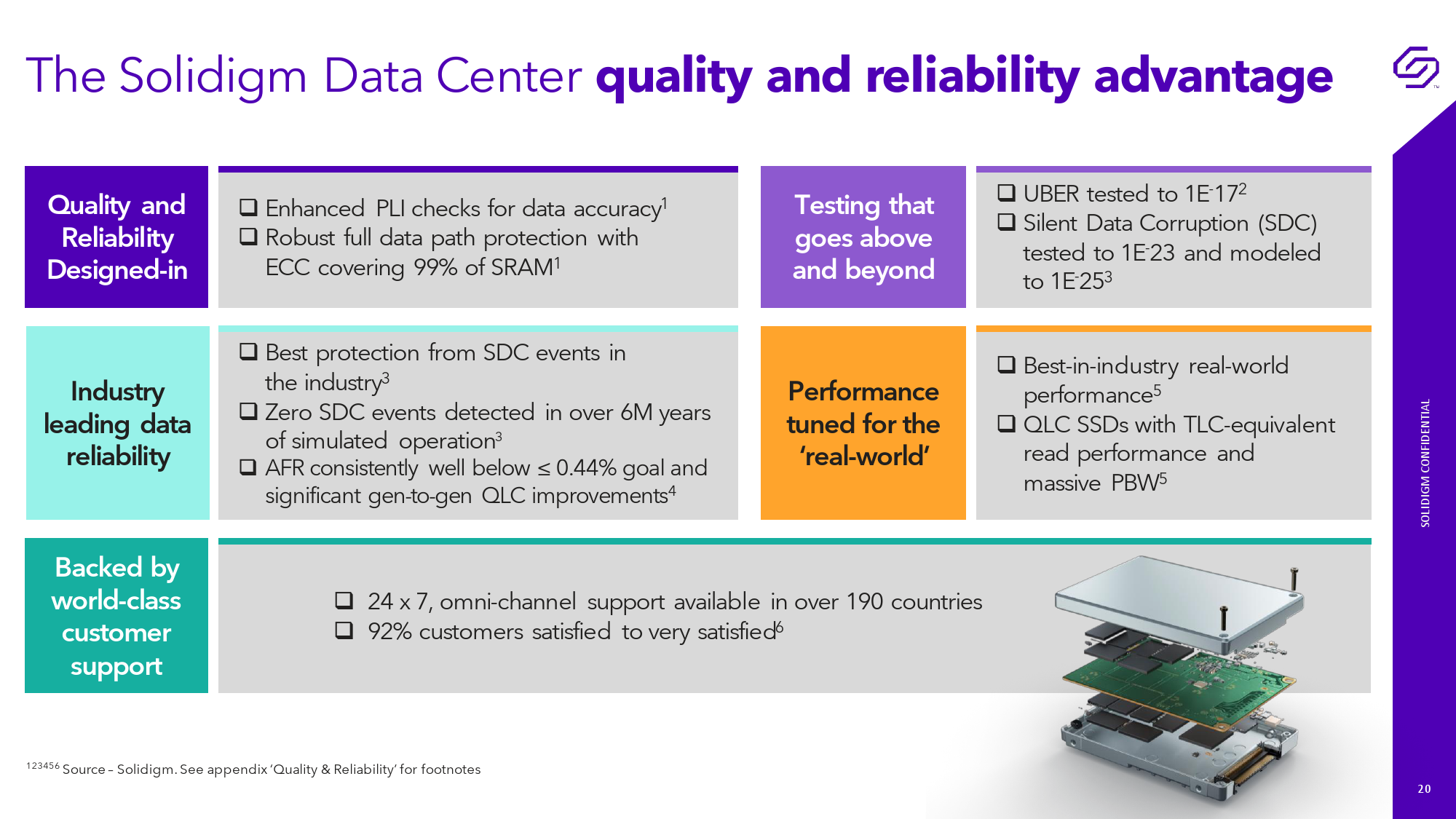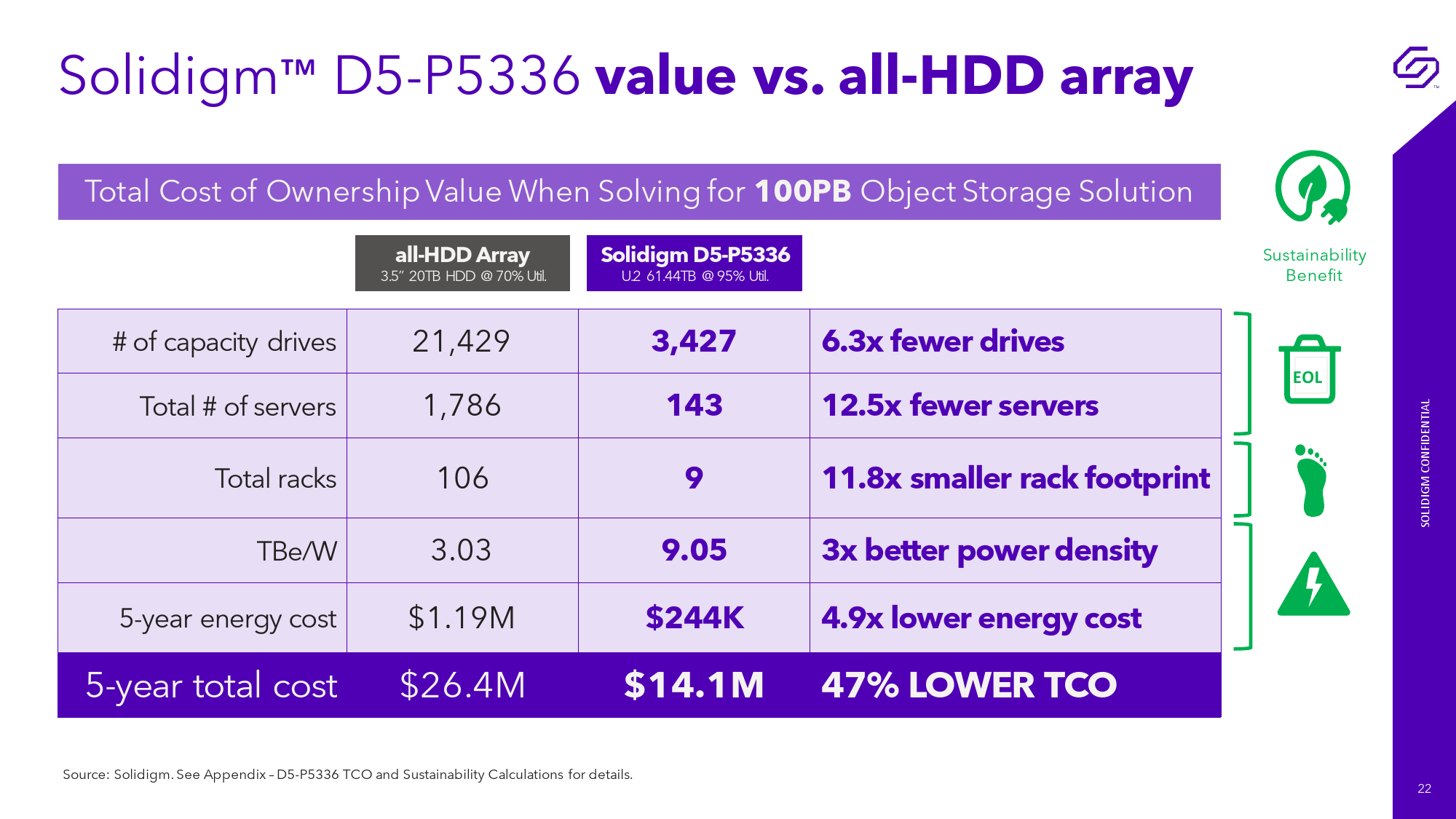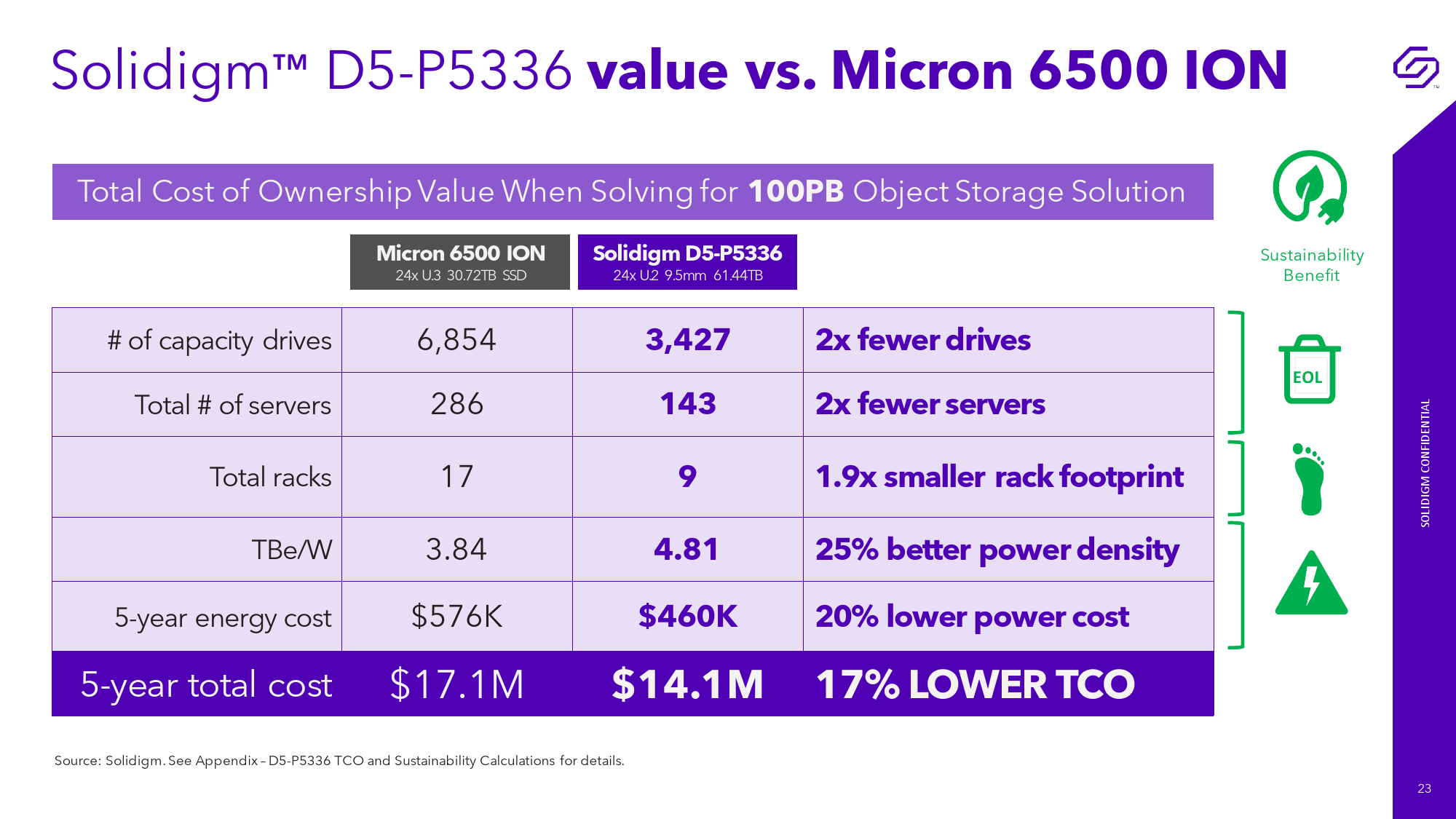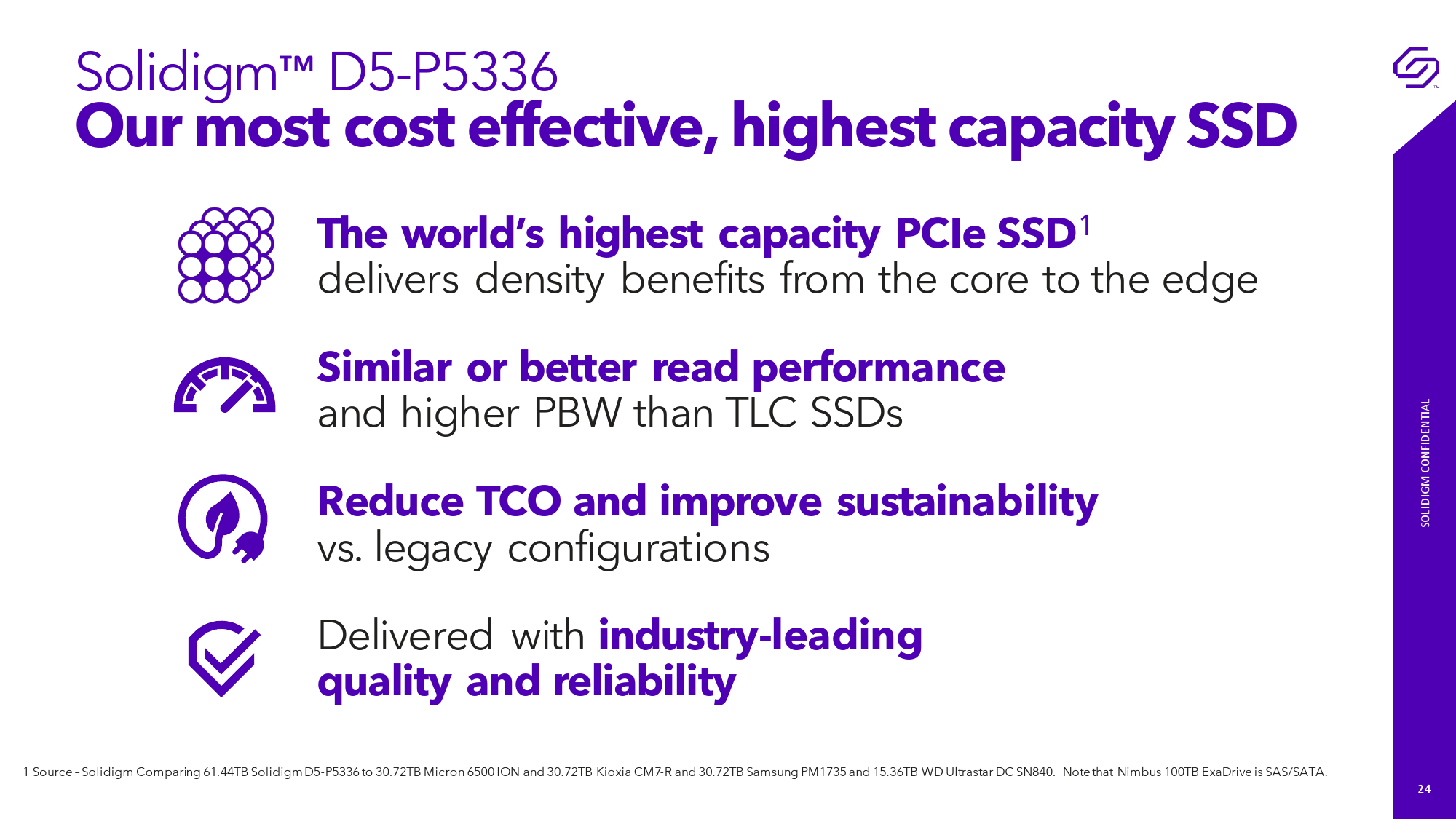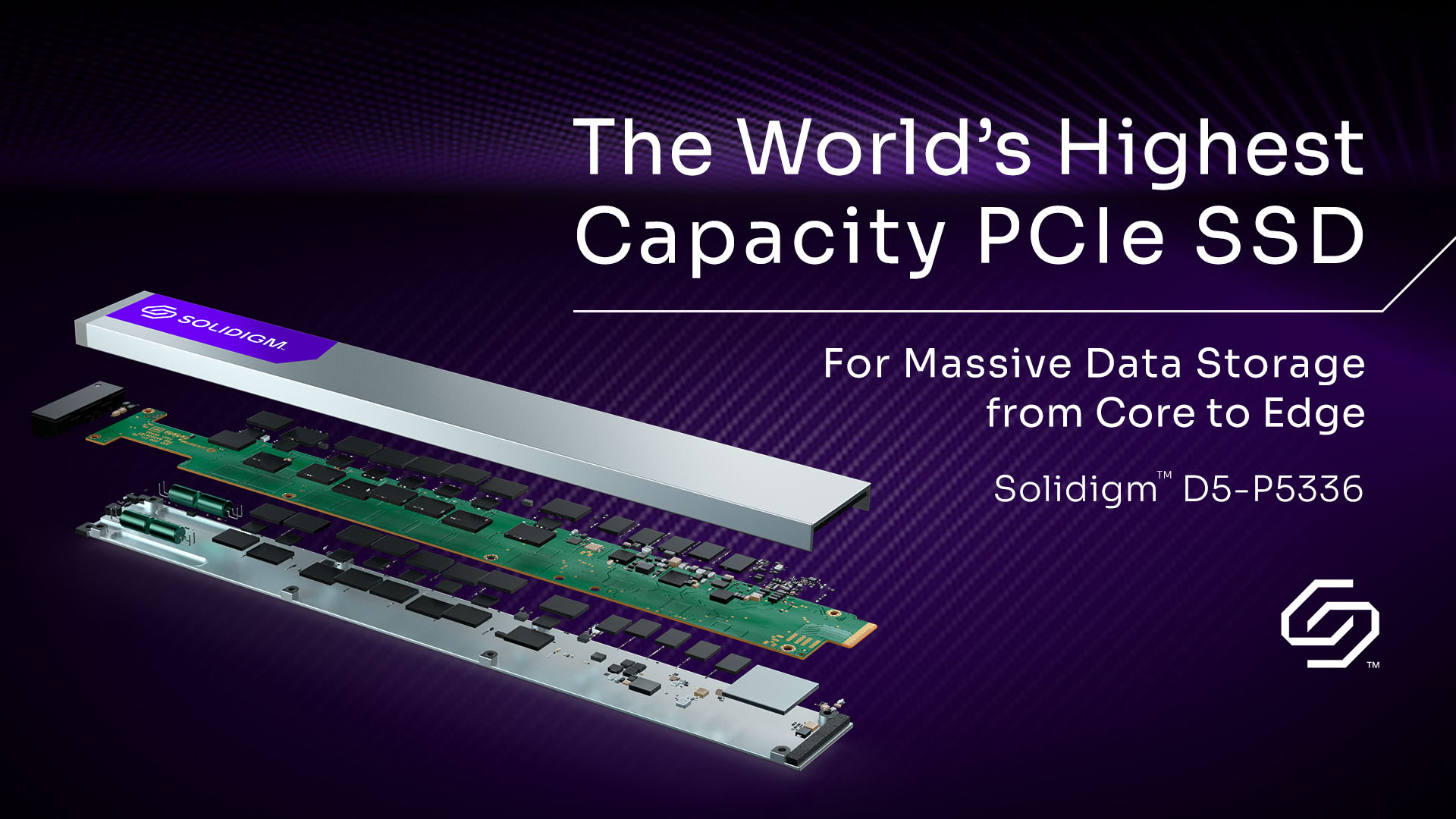
Solidigm has introduced its D5-P5336 drives that boast capacity of up to 61.44TB and feature a PCIe 4.0 x4 interface to enable read speeds of up to 7,000 MB/s. The device is designed to ultra-high-density read-intensive storage applications, such as AI inference on the edge or content delivery. As of now, the D5-P5336 family of solid-state drives that offer extreme capacity and great performance.
"Modern workloads like AI and capabilities like 5G are rapidly reshaping the storage landscape," said Greg Matson, VP of Strategic Planning and Marketing at Solidigm. "Businesses need storage in more places that is inexpensive, able to store massive data sets efficiently and access the data at speed."
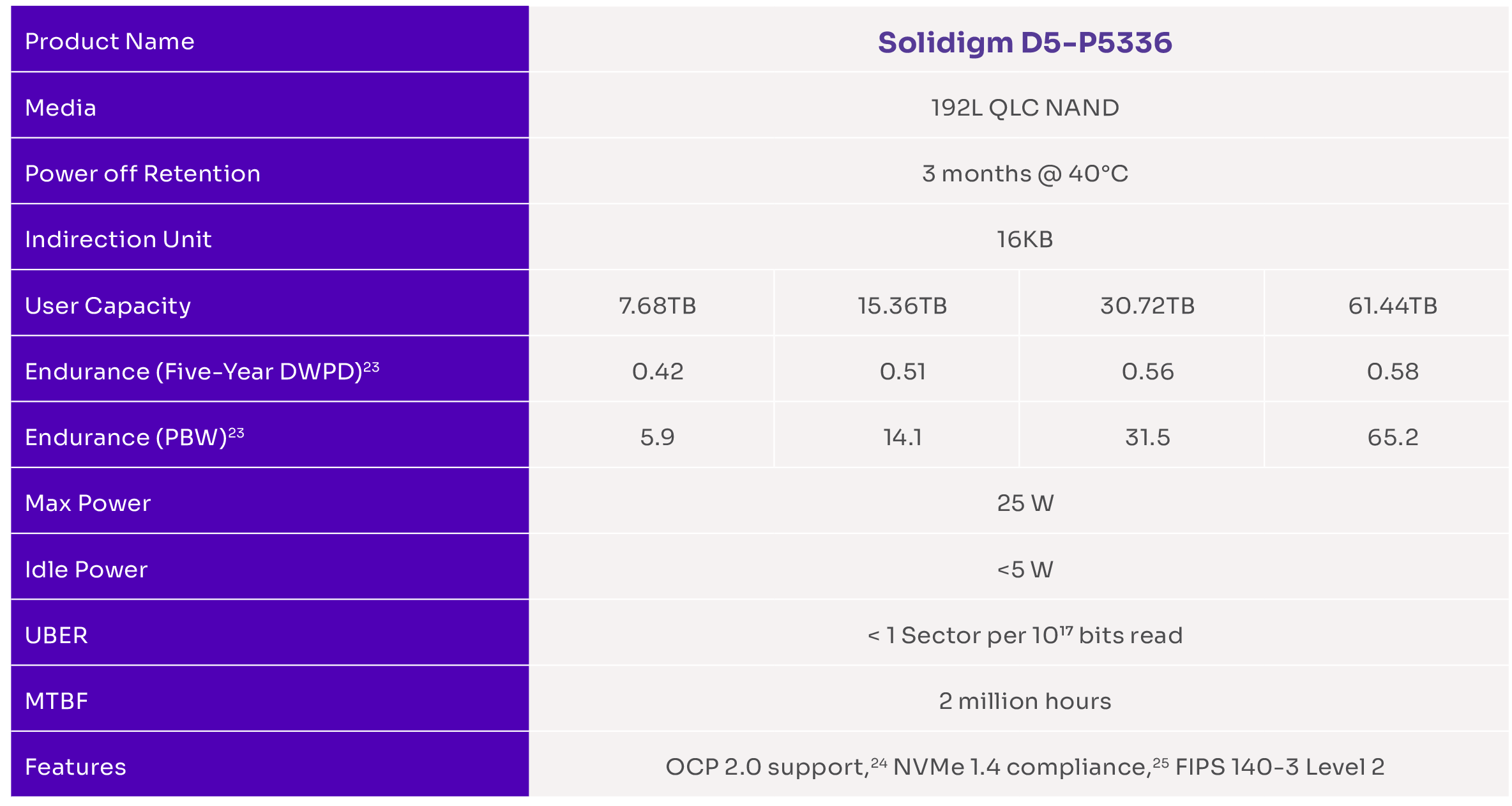
Solidigm's D5-P5336 SSD is based on SK Hynix's inexpensive 3D QLC NAND memory as well as a proprietary platform that ensures strong performance and very good endurance in addition to a rather extreme capacity. Solidigm says that its D5-P5336 provides sequential read speed of up to 7,000 MB/s, sequential write speed of up to 3,300 MB/s as well as random read/write speed of up to 1.005 million/38K 4K IOPS, which is rather good given that we are talking about drives that can store up to 61.44TB of data.
"The D5-P5336 delivers on all three — value, density and performance," said Matson. "With 3D QLC, the economics are compelling — imagine storing 6X more data than HDDs and 2X more data than 3D TLC SSDs, all in the same space at 3D TLC speed.
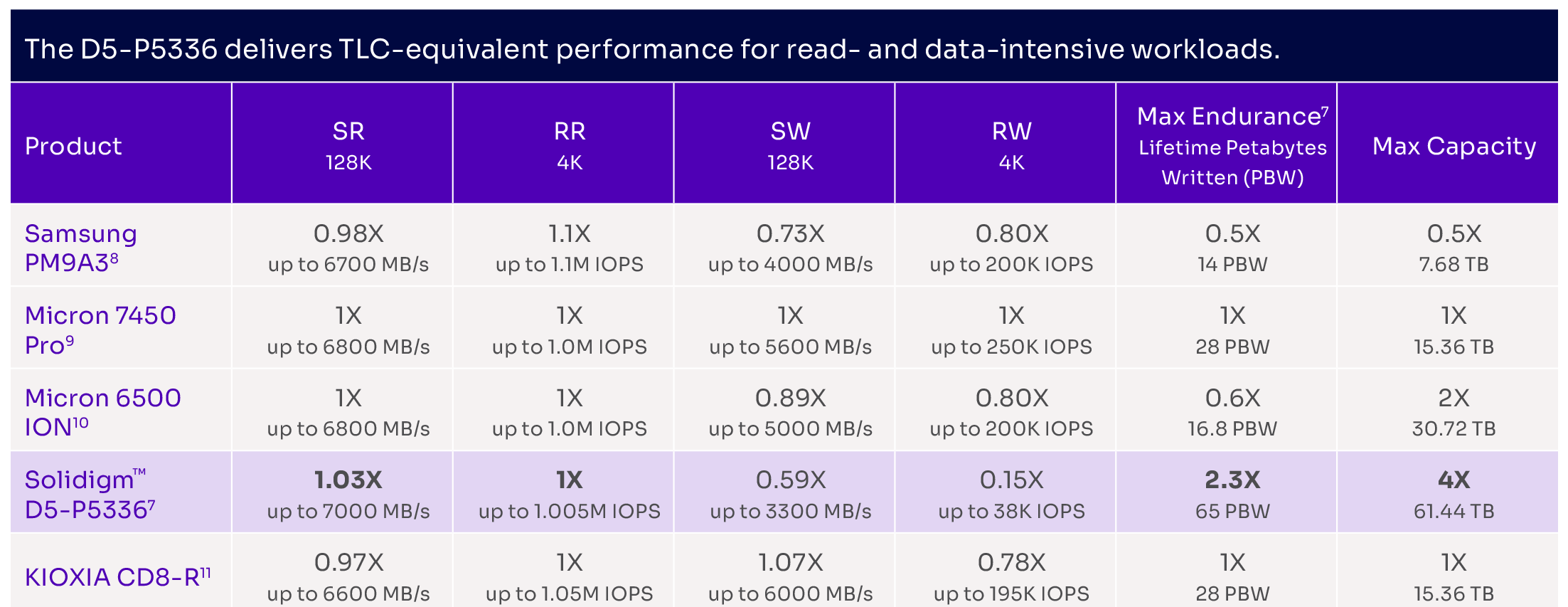
One of the distinctive features of Solidigm's D5-P5336 is their endurance (up to 65 PBW for top capacity drives), which is said to be in line with that of 3D TLC NAND, which is used by competing high-capacity drives that either cannot match D5-P5336 in terms of performance or in terms of capacity.
"For years there has been debate about endurance and reliability of SSDs, QLC in particular, but Solidigm might have ended that debate with the D5-P5336," noted Avery Pham, VP Operations, VAST Data. "Any number of applications will see notable benefits from these drives from AI and machine learning to object storage."
Solidigm will offer its D5-P5336 in three form-factors: U.2/U3 15mm, E3.S 7.5mm, and E1.L 9.5 mm with capacity points ranging from 7.68TB all the way to 61.44TB. Only the U.2/U.3 and E1.L drives will provide the 61.44TB capacity.

SSD's these large typically feature a SATA interface these days since most of them are designed to substitute for hard drives in applications that do not exactly require extreme performance, but rather need to just increase storage density. But applications like AI deployments on the edge have very specific requirements for storage density (as high as possible) and performance (as fast as possible) and SSD makers have to offer something new here. Apparently, Solidigm just beat its competitors to punch with a 61.44TB drive for these emerging applications.
